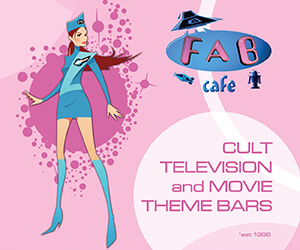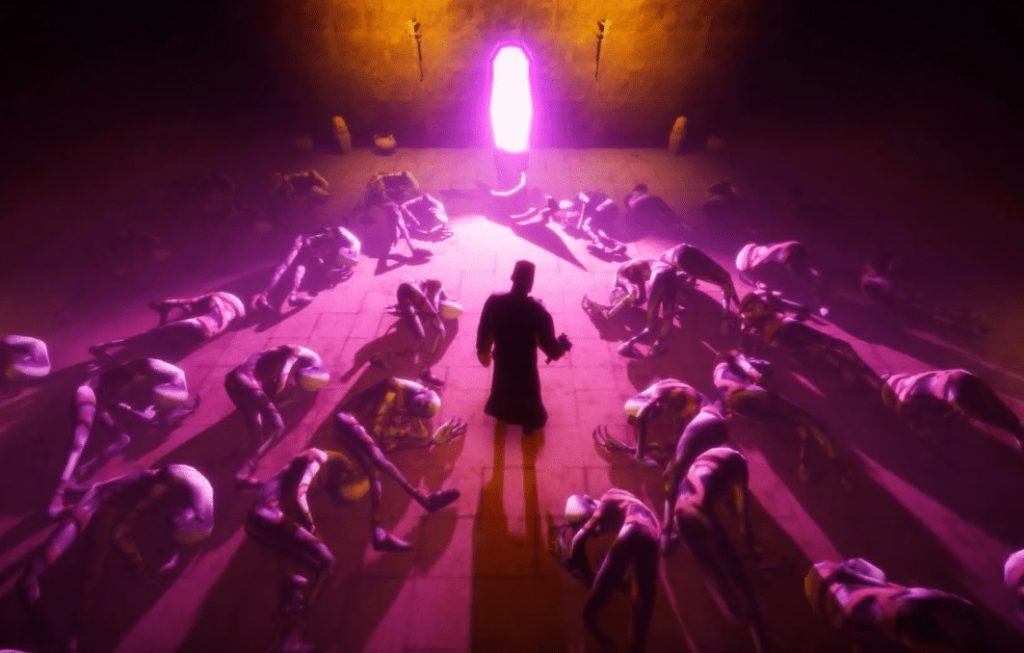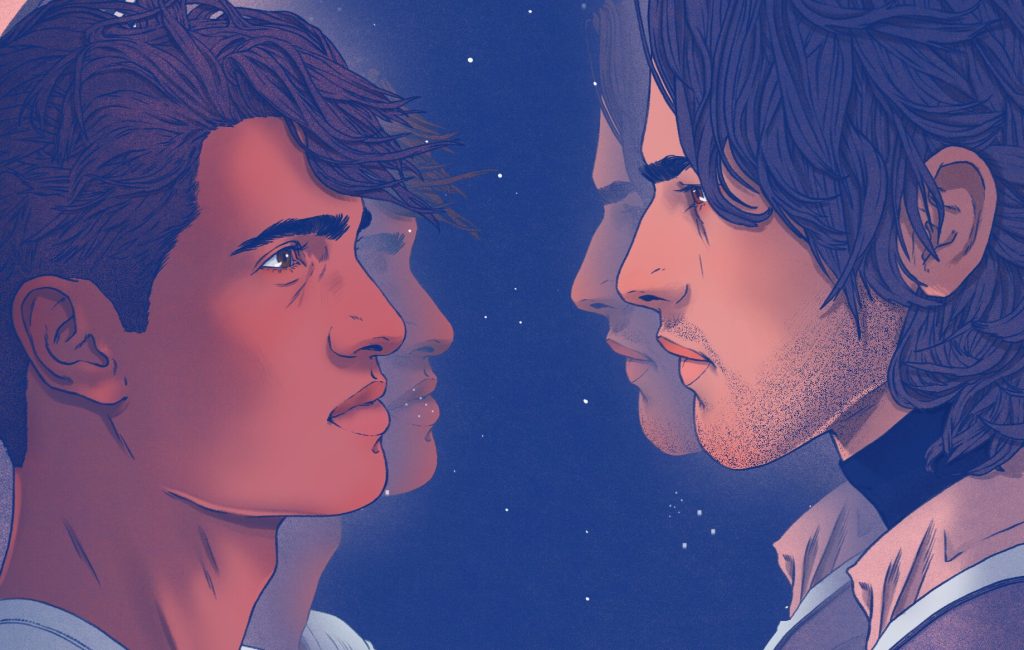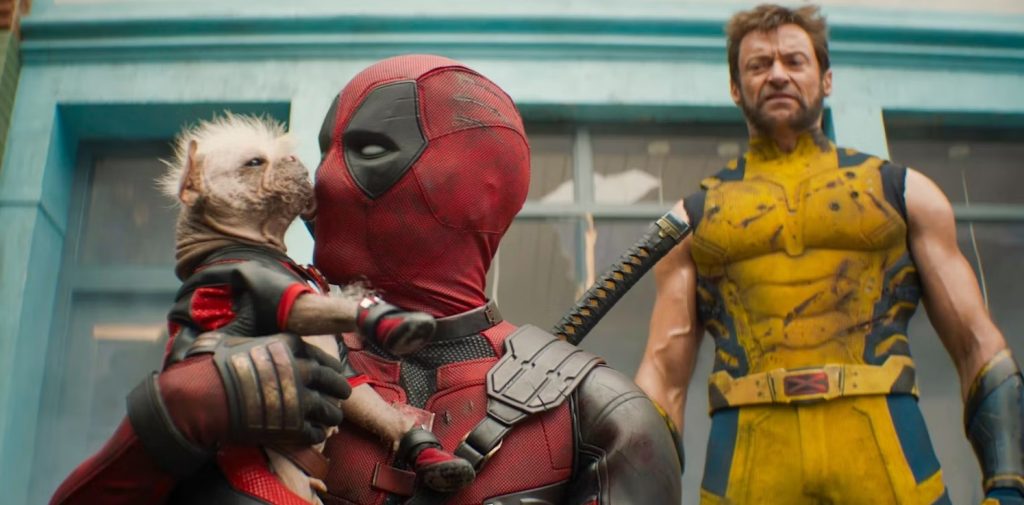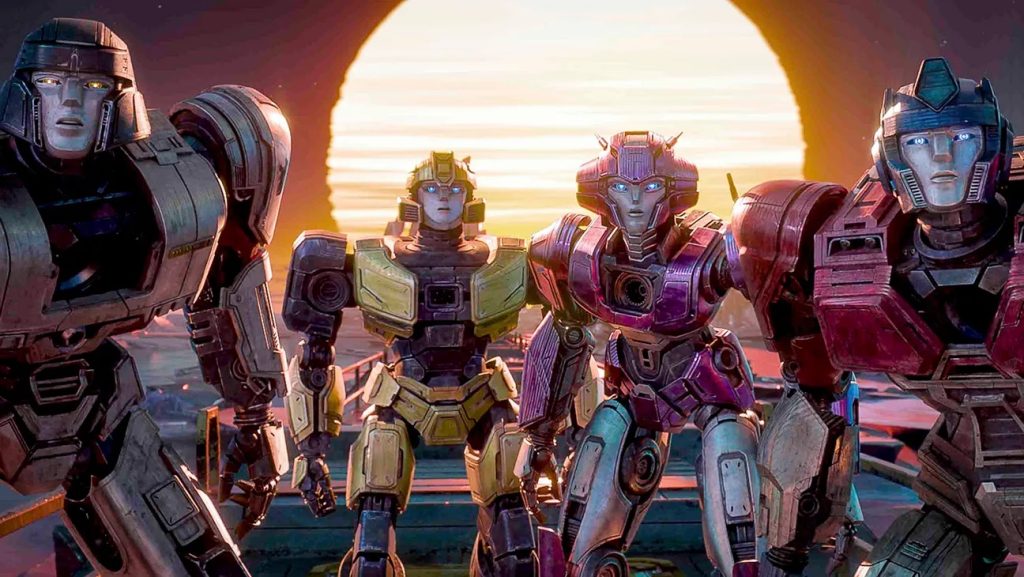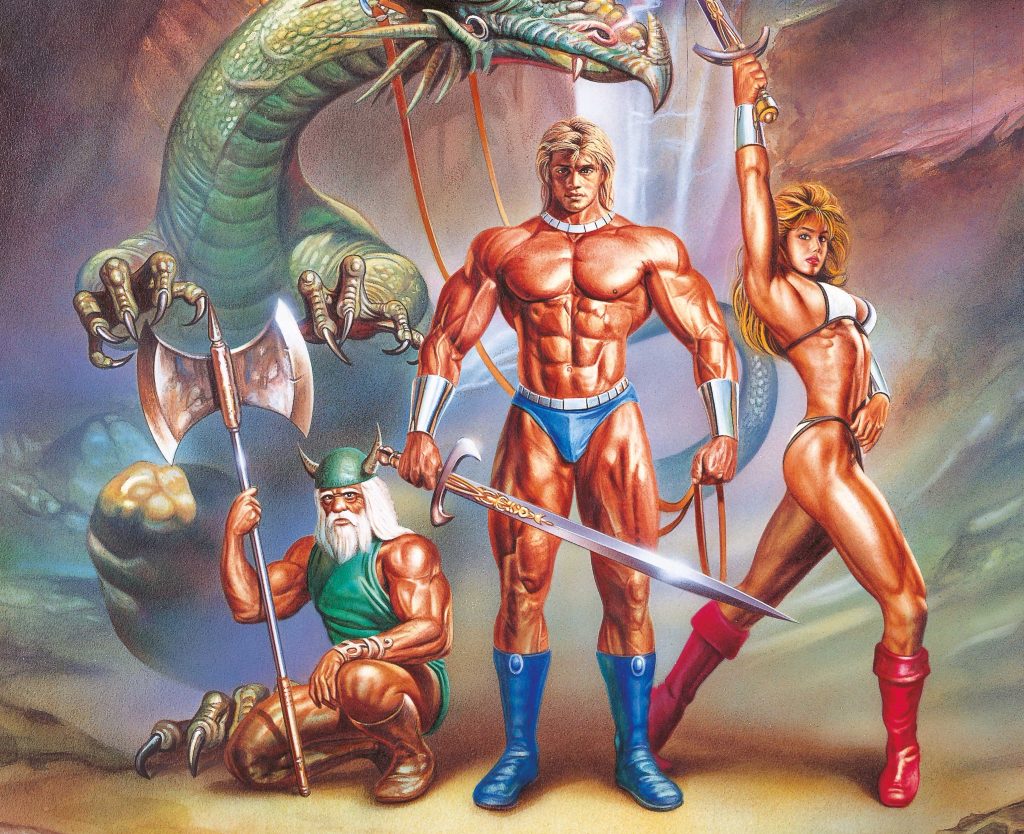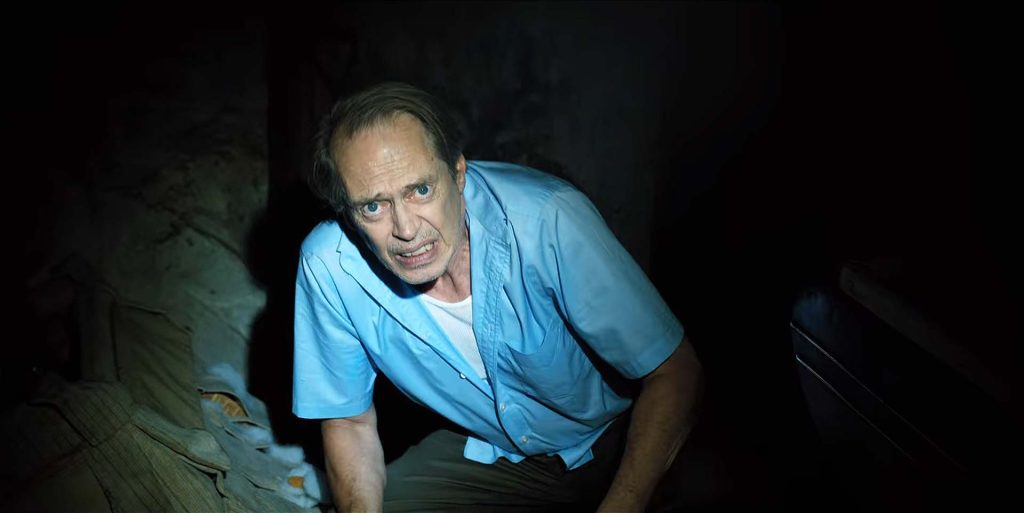It was four years ago that Robert Eggers burst onto the indie film scene with his directorial debut and supernatural period-horror, The Witch. Now back with one of the year’s best and weirdest films, The Lighthouse cements Eggers’ place alongside Ari Aster and Jordan Peele as one of this generation’s great horror directors. A dizzying tale of supernatural horror and madness, The Lighthouse follows two lighthouse keepers in 1890s New England during a four-week stay tending to the isolated island’s beacon. Thomas and Ephraim, played by the ever-excellent Willem Dafoe and Robert Pattinson, steadily descend into a special brand of paranoid, sex-crazed and booze-fuelled cabin fever. Eggers’ unmatched attention to detail and uncompromised vision make for a sensory and psychological trip you’re unlikely to forget, for better or for worse. On an appropriately cold, grey and drizzly London morning, STARBURST sat down with the director to discuss the making of his sophomore feature…
STARBURST: We read that your idea for this film started out simply as: ‘a ghost story in a lighthouse’. Can you tell us about the development from that to the finalised film?
Robert Eggers: Well, that was my brother’s idea and that just, for me, sort of spawned the visual atmosphere of the movie. You know, the black and white 35-millimetre, the Guernsey jumpers, the whole thing, and you learn more and it becomes more specific as you move forward. But more or less, I saw it like that, and then it was just about figuring out, “Well, what’s the story?” So we start reading about ghost stories and lighthouses, and lighthouse tragedies, and around day two I found the story of Smalls Lighthouse in Wales from 1801 – it was about two lighthouse keepers, both are named Thomas, one is older and one younger, and they get marooned in their lighthouse station. And the old one dies, the young one goes mad and basically, that seemed like a good story. And to some degree, I didn’t take it any further than that!
Do you think that the ghost’s presence still exists in that story?
I’m more interested in demons and my brother’s more interested in ghosts. And I think that some of the mermaid, and some other elements, are maybe more like demons than ghosts, but there are some things that are shared between the two. And there’s a lot of very serious occultists who, in that time when spiritualism was very popular, were going around saying that what these spiritualists were doing was really dangerous, because they thought that they were talking to the ghosts of their dead loved ones, when really they were conjuring demons who are pretending to be ghosts. So, there’s some nerdy information for the audience [laughs].
As mentioned, you co-wrote this with your brother Max. How did collaborating on a screenplay compare to writing it yourself, like you did with 2015’s The Witch?
They’re both satisfying in different ways. Right now, I’m really enjoying having a co-writer. I’ve had an incredibly fun time with my brother, and now I’m working with this Icelandic novelist and poet Sjón, which is also incredibly fun, but I do look forward to one day writing something by myself again. But the great thing about working with a collaborator is that you’re just constantly boosting the other person. You know, you’ll get this scene, and you’re like, what if we just tweak it like this, or like that. That’s exciting, and it creates a kind of joy that I don’t quite know of otherwise.
You’ve also often talked about how much you love the research aspect of pre-production, learning about the folklore behind settings, et cetera. Do you think that when you thoroughly research your films, is that more out of a desire of personal satisfaction, or do you believe it works to heighten the story?
For me, there is no story without the research. I mean, I truly love research. If I was not making creative works of some kind, I would probably be an archaeologist, and I’d be happy to just be digging around for artefacts and reading lots of books. I truly do enjoy it, and that doesn’t mean that I think you need to do all this research to create a believable world. You know, Bram Stoker’s Dracula, or Peter Brook’s King Lear, they create their own worlds, and that’s great. But I do think that for me, the atmosphere is an accumulation of details and when I’m doing research, then it’s easier for me to create a richer world than if I had pulled those details out of my imagination. That’s the hope, anyway.
Is that part of why you decided to build your lighthouse from scratch?
Well, we partially just couldn’t find one that worked for the story, and that was accessible. If we could have helicoptered onto an island in Maine every day, we could have found a great lighthouse that worked for us. But aside from the practicality, it also gives you much more control as a filmmaker, like in deciding where to place my camera, if I just build everything accordingly.
And speaking of the camera, you used camera lenses from 1912 and from the 1930s which give the image a very distinctive look, as well having the film in black-and-white and in a vintage aspect ratio. At what stage in the creative process were you like, “Right, this is how I want it framed“?
I mean again, when my brother said, “ghost story in a lighthouse“, I pictured a boxy aspect ratio and the black-and-white 35-millimetre. The look evolved and, you know, I originally thought we would shoot the film in 1.33:1, but we shot the film in 1.19:1 which is an early aspect ratio that’s even boxier. That was sort of a suggestion that Jarin [Blaschke], my Director of Photography made, like half-jokingly over some bourbon one night and I thought, “actually, that’s a great idea!” I mean, this is many, many years before we shot the movie. This was something that we talked about often. So it was quite satisfying that we actually made the movie, because we were always fantasising about what it would be. And over the years, exactly what the black-and-white look would be, and how much grain, how much contrast, and so on and so forth, was something that was changing as we spoke, and when it came down to what equipment, what film stock, what lenses were available for us to use, then that made the final decisions for us.
In previous interviews, you’ve said that you and your DP created a ‘camera language’. Could you elaborate a little on that?
Film 101 suggests traditional coverage. You shoot the scene in a wide shot, and then you go in for your medium shot and your close-ups, and if you need any inserts, you do that. That’s sort of the traditional filmmaking, and it’s certainly how most television shows are shot. If I wanted to photograph our conversation right now, I would want to think about whose point of view I’m telling the story from, and how I’m going to place the camera to convey that. And my DP and I were also looking for an economy of shots, so that every cut point has a purpose. Thinking about what the next sequential image would be and ensuring it had visual impact against the next shot. I don’t know if that’s clear, but we were designing our shots carefully to convey certain things; for example, we wouldn’t show a wide landscape unless the character whose perspective it’s from felt small psychologically. It can be a little precious when you talk about the intentions to find these things, and they’re to be felt, not necessarily something that would make someone say “Oh, blah blah blah, what our intentions are…” but there’s a feeling there.
It works subconsciously for the viewer.
That’s the hope.
I understand that Robert Pattinson and Willem Dafoe approached you, rather than the other way around, wanting to collaborate on one of your projects. Once you had decided The Lighthouse was going to be your sophomore feature, how did you know those two would work well together?
The working together was a hunch, a hope, and a prayer. I did feel somewhat confident, having met both of them, that it would work out. And, I mean, who else could play these roles?
Well now that we’ve seen them in action, I’m tempted to say no one!
Exactly.
Of course, Dafoe is more theatre-trained whereas Pattinson has done a lot of indie, auteur cinema. Did they require very different directing styles?
Yeah, I mean, they both require different things, and that’s just fine. But their characters are very different and actually, their acting styles and directing requirements sort of mirrored their characters. I don’t know how much of that is my doing a good job casting, or their subconscious behaviour, but it worked out.
With those two stuck in a lighthouse together with no escape, there’s an exploration of toxic masculinity – even though, of course, the term didn’t exist then – set against extremely powerful, feminine forces like the sea and the mermaid. Can you talk a little about the tension that creates?
Looking at this poster here… [we are sat on opposite sofas, a huge film poster at our side picturing the roaring ocean and a lone lighthouse disappearing in the storm], with this tiny phallus surrounded by the sea, you know he doesn’t stand a chance. I think that one doesn’t – or I don’t – write intending a specific message, but things come to the surface as you’re writing. Given the zeitgeist, and also given the fact that it’s just two guys in a giant phallus, it’s only ever going to be hyper-masculine bad stuff. If you’re trying to create something inspired by the notion of a ghost story in a lighthouse, it’s not going to be the story of brotherly companionship and heroism; it’s going to be the dark side of that behaviour. For whatever reason, I like exploring the dark side of humanity [laughs]!
The Lighthouse and The Witch deal with ideas of feminine power in very different ways. Do you consider both films to be in conversations with one another?
I think that this becomes a sort of masculine companion piece to The Witch. But I think it’s interesting because, you know, the sea is the sea and she is what she is. The mermaid is weird because she literally begins as an object, and then this object of fantasy gains more power than Rob, then it becomes all-encompassing to him. How does that speak in conversation with The Witch, I don’t know, but I’m sure someone smarter than myself will have something clever to say.
The design of the mermaid is also pretty unusual; what influences did you draw upon for her design? [If you’ve yet to see the film, think your usual fishtail with a giant vagina in the middle]
So, not always but generally, mermaids in the Middle Ages and the Renaissance had a split tail, like the mermaid on the Starbucks cup. So that, with that design, the mermaid would be able to serve the function that her male fantasisers would thrust upon her. And the Victorians unsurprisingly sealed up the mermaid, but we needed to find out how mermaids could make more merpeople, so we based her genitals on shark genitals. And they’re both clearly not human, yet also look slightly human.
You referred to the lighthouse itself as phallic, but the characters often speak of the light as a feminine presence, and Dafoe’s character even calls it a ‘she’ and speaks of the light as though it were his wife or lover. What lies behind that duality?
I think that Dafoe, in his 19th-century mindset, would have to refer to the light as a ‘she’ for it to work in his worldview. For him to express that love for the lighthouse, he embraces a specific gender binary that works with how he sees the world. But, to show more of my hand than I usually do, I think of the light as more hermaphroditic than female.
Finally, as we’re wrapping up, can you say anything about your plans for future projects?
Yeah well, it was leaked that I’m making a Viking revenge saga. So, you know, anything can still happen. If you want to see that happen, think happy thoughts for me. I hope it happens.
Now it’s been leaked, the pressure’s on.
The pressure is on!
THE LIGHTHOUSE is in UK cinemas from January 31st.


